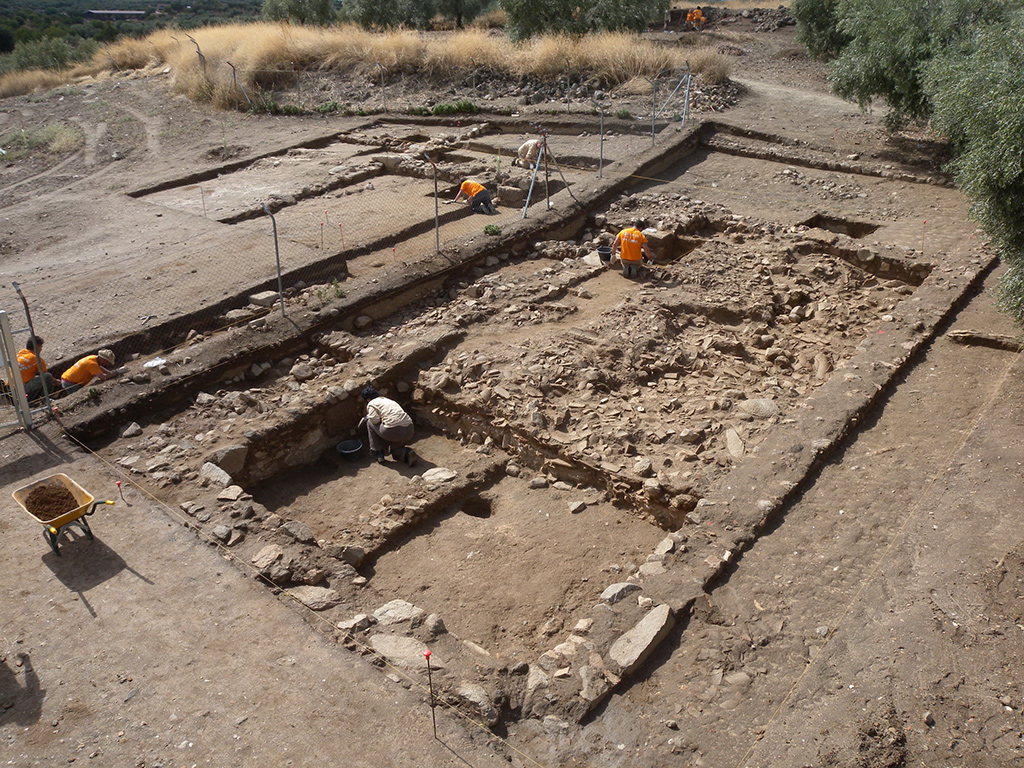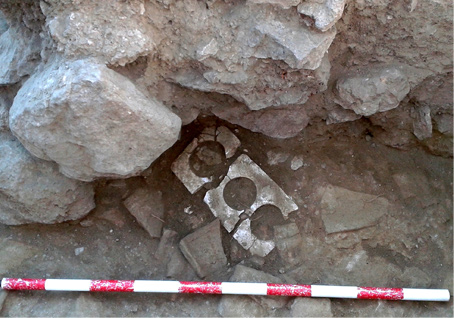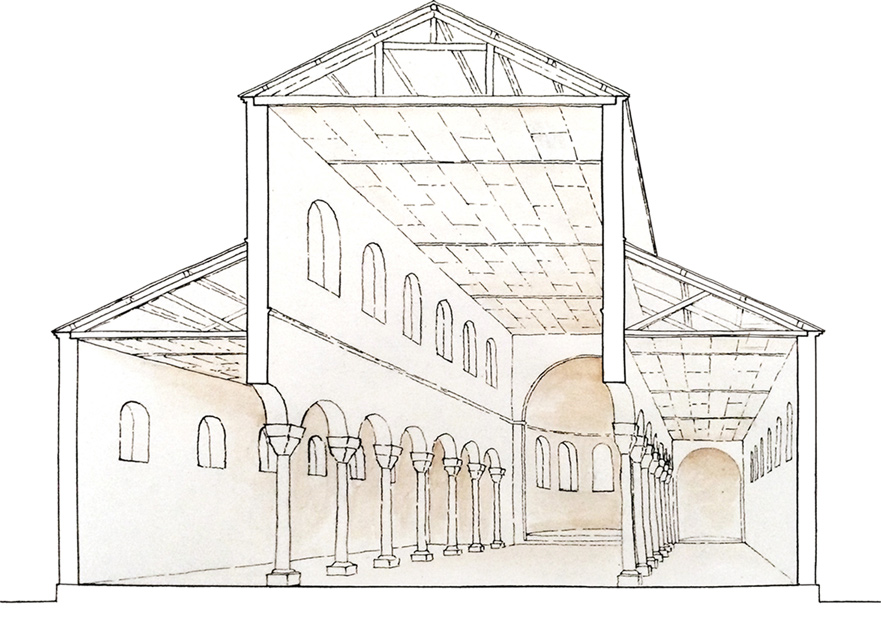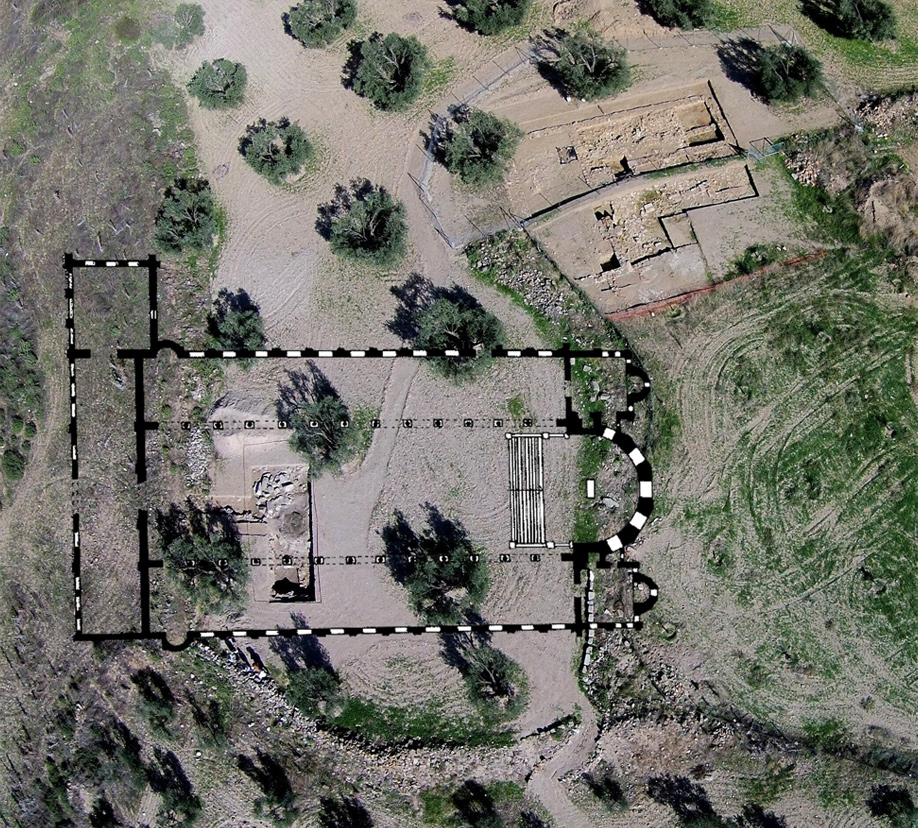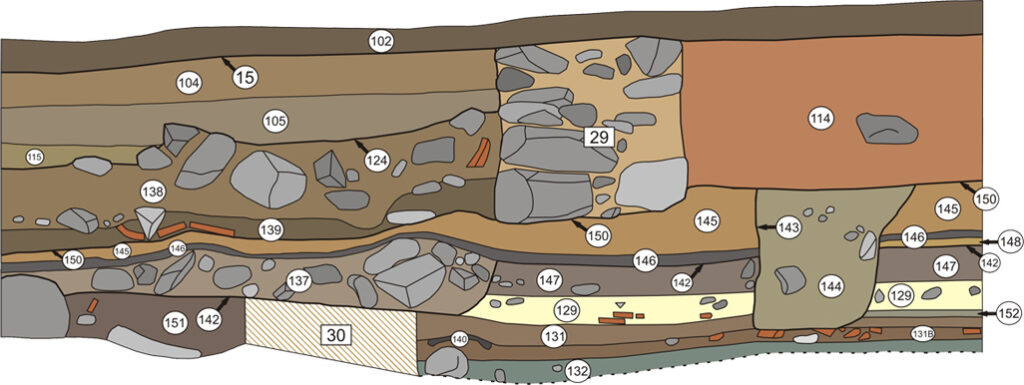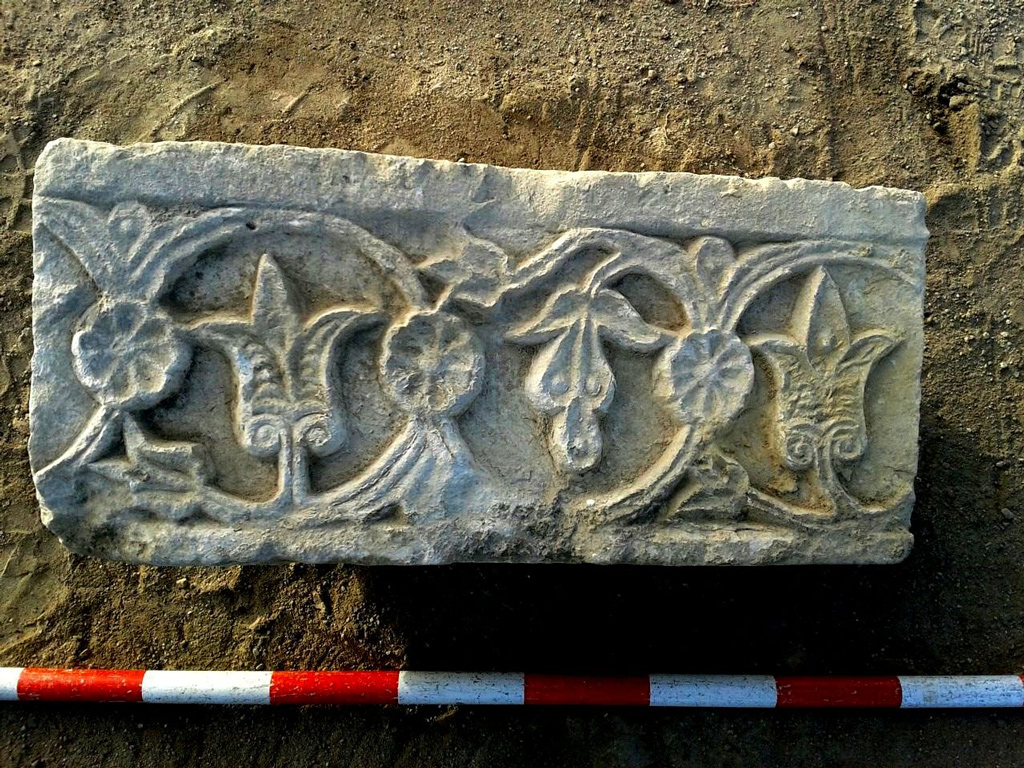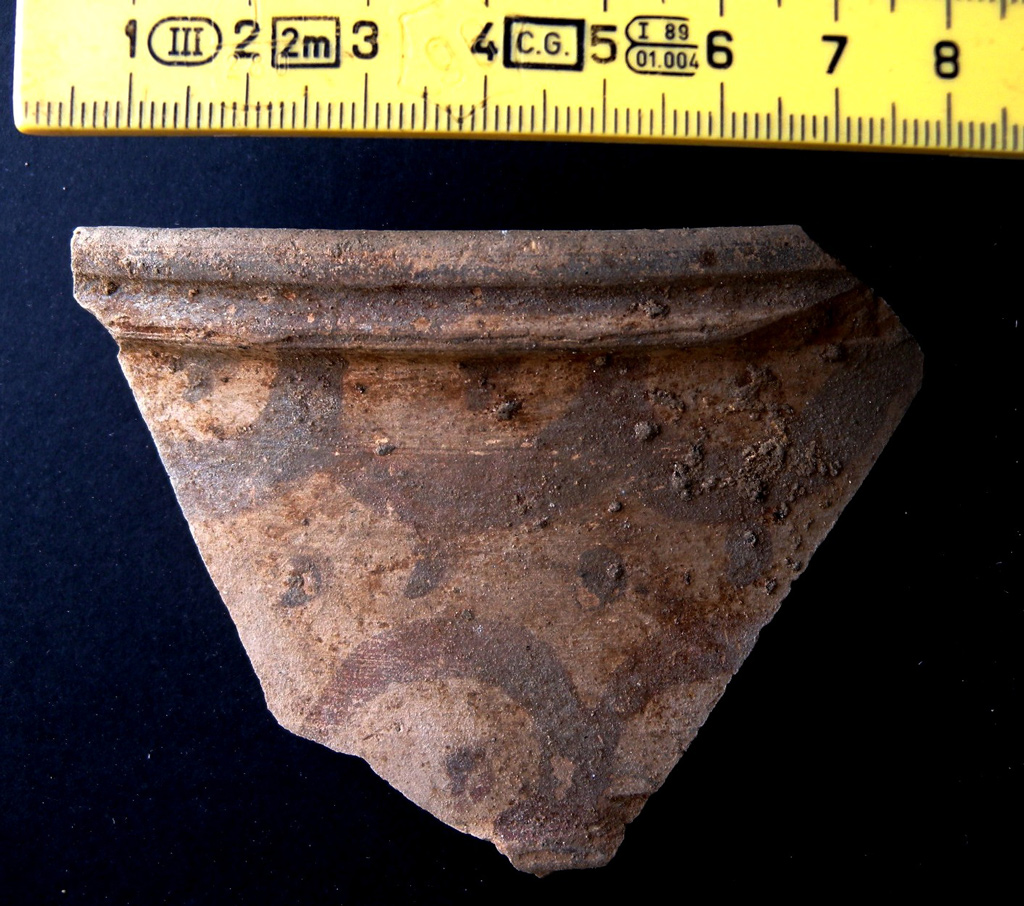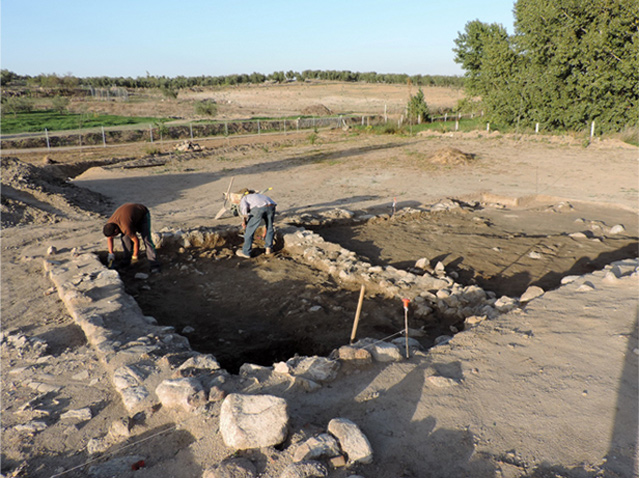Los Hallazgos en Guarrazar
LAS EXCAVACIONES REALIZADAS ENTRE 2013 Y 2014 CONFIRMAN QUE EN GUARRAZAR SE ENCUENTRA UN IMPORTANTE YACIMIENTO ARQUEOLÓGICO DE ÉPOCA VISIGODA
Áreas 1 y 2
En este lugar se han descubierto restos de un edificio de época visigoda (Siglos VII-VIII) que pudo formar parte de un monasterio asociado a la iglesia basilical que habría en el área 3.
El hecho de haber podido descubrir casi toda la extensión de este edificio es una importante aportación para el conocimiento de posibles monasterios de época visigoda, ya que todavía se sabe muy poco sobre ellos.
Al igual que en el edificio de la basílica, este fue ocupado a lo largo de los siglos VIII y IX, aunque sus habitantes no sólo no hicieron labores de mantenimiento, sino que se dedicaron a desmontar algunas de sus estructuras, a la vez que dejaban que se derrumbaran otras.
Algunas de las características de los restos constructivos descubiertos en el Área 1-2 permiten suponer que el edificio de las dos grandes estancias dispuestas en L tendría dos plantas, a las que se le adosaron otras dos pequeñas habitaciones de planta baja y un porche que servía de comunicación entre todas las estancias.
Dibujo de la planta del edificio descubierto en el Área 1-2, con localización de los sondeos estratigráficos.
La secuencia estratigráfica del sondeo 1 (Espacio 1) muestra varias fases de ocupación que se produjeron en esta parte del edificio a lo largo del siglo VIII, en el que se produjo el desmantelamiento de gran parte de sus estructuras (tejado, puerta, etc.).
Este dibujo del perfil estratigráfico del sondeo 2 (Espacio 2), muestra una superposición de restos constructivos que ayudan a conocer cómo pudo producirse el derrumbe de este ala del edificio. El hecho de que se hayan documentado varios ladrillos de adobe completos permite suponer que los muros de la planta superior del edificio estarían construidos con este material.
Área 3
Fotografía aérea de las Áreas de excavación 1/2 y 3 (finales de 2014) con planta hipotética de una basílica.
En este dibujo de uno de los perfiles estratigráficos del Área 3 se muestran algunas estructuras (cimientos de edificios, fosas, etc.) y estratos (suelos y restos de derrumbes de edificios) correspondientes a diferentes edificaciones que ocuparon el espacio de la basílica durante la época andalusí (ss. VIII-XI).


